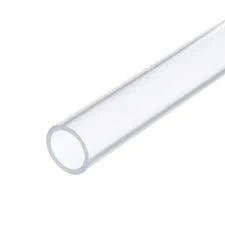Sep . 21, 2024 23:13 Back to list
welding rods for pvc
Welding Rods for PVC An Essential Guide
When it comes to joining polyvinyl chloride (PVC) materials, the right welding technique is crucial for ensuring strong, durable bonds. PVC is widely used in various applications, from piping systems to signage, thanks to its excellent chemical resistance, low cost, and versatility. However, the effectiveness of welding PVC relies heavily on the appropriate use of welding rods specifically designed for this purpose.
Welding Rods for PVC An Essential Guide
One of the most common types of welding rods for PVC is the solid rod, which is usually available in various diameters and lengths. These rods can be used in conjunction with hot air welding or extrusion welding techniques. For hot air welding, the welding rod is heated by the hot air gun, which melts both the rod and the PVC surface, allowing for a seamless joint. In extrusion welding, the rod is fed through a welding gun, where it is melted and extruded directly onto the joint.
welding rods for pvc

Choosing the right welding rod is essential for achieving a successful bond. Firstly, it is important to select a rod that matches the type of PVC being welded. For instance, there are different formulations of PVC, including rigid and flexible types, and each may require specific rods for optimal results. Additionally, ensure that the rods are free from impurities and contaminants, as these can compromise the integrity of the weld.
Preparation is another key factor in welding PVC effectively. The surfaces to be welded should be clean and free from dust, grease, or other debris. A clean surface allows for better adhesion and a stronger joint. In some cases, it may be beneficial to lightly sand the surfaces to create a better bonding area.
Temperature control during the welding process is vital. For optimal results, the welding temperature should be carefully monitored to prevent overheating, which can lead to distortion or degradation of the PVC. Typically, temperatures between 250°C and 300°C (482°F to 572°F) are recommended for most PVC welding applications.
In summary, welding rods for PVC are critical for achieving robust and reliable joints in various applications. By selecting the appropriate rods, preparing surfaces adequately, and controlling the welding temperature, welders can ensure high-quality bonds that meet the demands of their projects. Whether in industrial settings or DIY applications, understanding the nuances of PVC welding will lead to better results and longer-lasting installations.
-
Durable PP Rigid Sheet: Lightweight, Chemical Resistant Solutions
NewsAug.21,2025
-
PVC Grey Sheet for Extraction: Chemical Resistant & Durable
NewsAug.19,2025
-
Durable PVC Pipe Fittings for Plumbing & Irrigation Needs
NewsAug.18,2025
-
HDPE Steel Belt Reinforced Spiral Corrugated Pipe | High Strength
NewsAug.17,2025
-
HDPE Pipe Fittings: Durable, Leak-Proof Solutions
NewsAug.16,2025
-
Premium CPVC Sheet: High-Temp & Chemical Resistant Solutions
NewsAug.15,2025

